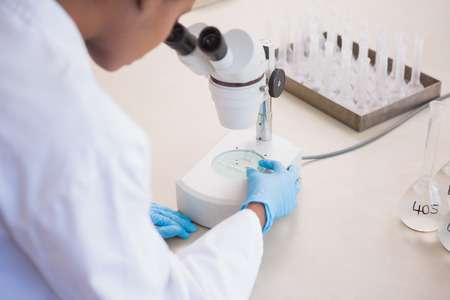'Heart repair' research boosted by new findings

Scientists trying to find ways to regenerate a damaged heart have shed more light on the molecular mechanisms that could one day make this a reality.
New findings from a study carried out by researchers at the University of Aberdeen and supported by the British Heart Foundation have been published today in Stem Cell Reports.
Whilst other organs such as the liver can regenerate, the heart muscle has very little ability to do so after suffering damage, such as a heart attack.
In the womb the body is able to produce heart muscle cells but soon after birth it effectively stops producing them.
Recent studies have suggested a few stem cells in the adult heart could still differentiate into heart muscle cells using similar mechanisms as those that happen in the embryonic heart.
Scientists are already able to manipulate cultured embryonic stem cells in a petri dish to become heart muscle cells (cardiac myocytes) that visually 'beat'. This process allows experts to study the molecular mechanisms driving stem cell differentiation into heart muscle cells.
The tissues and organs of developing embryos are organised by a process called cell-to-cell signalling – effectively cells 'talking' to each other. These interactions are controlled by signalling molecules. A particularly important class of these molecules are called Wnt signals.
Previous studies had shown that 'artificial' activation and inhibition of Wnt signalling can induce the production of heart muscle cells. New research carried out at the University of Aberdeen has carefully monitored Wnt signalling activity and where and when Wnt signals normally occur, which now lends further evidence that Wnt signals naturally regulate heart muscle differentiation.
It is hoped that by understanding the molecular mechanisms involved in heart muscle cell development, scientists will be able to contribute to new therapeutic strategies that could, in the future, encourage heart regeneration.
First author of the paper, Silvia Mazzotta, who is a PhD student at the University of Aberdeen said: "During embryonic life we can make heart muscle cells but if an adult suffers from heart infarction in later life the heart muscle can't regenerate sufficiently to repair itself.
"The hope is that if we understand the molecular mechanisms surrounding how this works we may in the future contribute to new therapeutic strategies to encourage heart regeneration."
Professor Stefan Hoppler added: "What this research shows is that flicking the switch to turn Wnt signalling on or off is not just an experimental trick, but recapitulates normal heart muscle cell formation.
"This is potentially extremely important considering the huge impact that cardiovascular disease has on modern society."
Professor Jeremy Pearson, Associate Medical Director at the British Heart Foundation, which funded the research, said: "Heart failure, often caused by the irreparable damage inflicted by a heart attack, affects over half a million people in the UK. Treatments to prevent people developing heart failure, or that can reverse this disabling condition, are urgently needed – research like this offers hope.
"This study offers clues that may help to switch on the repair of heart cells after a heart attack. This is the major goal of the BHF's Mending Broken Hearts Appeal, which was launched to help reduce the burden of heart failure by funding pioneering regenerative medicine research."
More information: Silvia Mazzotta et al. Distinctive Roles of Canonical and Noncanonical Wnt Signaling in Human Embryonic Cardiomyocyte Development, Stem Cell Reports (2016). DOI: 10.1016/j.stemcr.2016.08.008

















